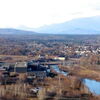Processing Your Payment
Please do not leave this page until complete. This can take a few moments.
- News
-
Editions
-
- Lists
-
Viewpoints
-
Our Events
-
Event Info
- Business Leaders of the Year Reception 2025
- Women's Leadership Forum 2025
- On the Road with Mainebiz in Bethel
- Health Care Forum 2025
- On The Road with Mainebiz in Greenville
- On The Road with Mainebiz in Waterville
- Small Business Forum 2025
- Outstanding Women in Business Reception 2025
- On The Road with Mainebiz in Bath
- 60 Ideas in 60 Minutes Portland 2025
- 40 Under 40 Awards Reception 2025
- On The Road with Mainebiz in Lewiston / Auburn
- 60 Ideas in 60 Minutes Bangor 2025
Award Honorees
- 2025 Business Leaders of the Year
- 2024 Women to Watch Honorees
- 2024 Business Leaders of the Year
- 2023 NextUp: 40 Under 40 Honorees
- 2023 Women to Watch Honorees
- 2023 Business Leaders of the Year
- 2022 NextUp: 40 Under 40 Honorees
- 2022 Women to Watch Honorees
- 2022 Business Leaders of the Year
-
-
Calendar
-
Biz Marketplace
- News
- Editions
- Lists
- Viewpoints
-
Our Events
Event Info
- View all Events
- Business Leaders of the Year Reception 2025
- Women's Leadership Forum 2025
- On the Road with Mainebiz in Bethel
- Health Care Forum 2025
- On The Road with Mainebiz in Greenville
- + More
- On The Road with Mainebiz in Waterville
- Small Business Forum 2025
- Outstanding Women in Business Reception 2025
- On The Road with Mainebiz in Bath
- 60 Ideas in 60 Minutes Portland 2025
- 40 Under 40 Awards Reception 2025
- On The Road with Mainebiz in Lewiston / Auburn
- 60 Ideas in 60 Minutes Bangor 2025
- - Less
Award Honorees
- 2025 Business Leaders of the Year
- 2024 Women to Watch Honorees
- 2024 Business Leaders of the Year
- 2023 NextUp: 40 Under 40 Honorees
- 2023 Women to Watch Honorees
- 2023 Business Leaders of the Year
- + More
- 2022 NextUp: 40 Under 40 Honorees
- 2022 Women to Watch Honorees
- 2022 Business Leaders of the Year
- Nomination Forms
- Calendar
- Biz Marketplace
Paper and pulp demand rebounds

After one of the worst years in memory, Maine’s pulp and paper industries are bouncing back as myriad factors — from global pulp shortages to a short Maine winter — have combined to increase demand and prices for the mills’ products.
Maine’s paper production dropped from 3.8 million tons in 2007 to 2.8 million tons in 2009, the lowest level since the late 1970s, forcing mills to lay off workers and idle machines. “Last year was a terrible year,” says Keith Van Scotter, CEO of Lincoln Paper & Tissue, which operated at below capacity for most of the year.
But the effects of the recession that stalled demand last year have begun to ease, positioning Maine’s paper industry for a strong third quarter. Production has picked back up and most mills are again running at full capacity, according to Don White, CEO of Prentiss & Carlisle, a timber management company in Bangor that tracks the state’s forest products industry.
More consumer spending means more advertising; more advertising means more pages in newspapers and magazines, which means more demand for the newsprint and glossy magazine paper produced by several Maine mills, says John Williams, president of the Maine Pulp & Paper Association. “People are starting to buy things again and so advertisers are promoting their products,” he says.
Williams estimates that 2010 paper production levels will be back on line with 2008 levels, when Maine’s paper mills produced 3.7 million tons of paper.
In a sign of confidence, Sappi Fine Paper North America recently announced a $36 million investment at its Skowhegan mill, the largest paper mill in the state. The investment will reduce the mill’s oil consumption by more than 100,000 barrels a year by increasing its use of black liquor, a renewable fuel generated as a byproduct of the pulping process.
Additionally, proposed tariffs against Chinese and Indonesian imports of coated paper could also offer Maine mills an advantage when competing with foreign imports. The proposed tariffs are designed to prevent products coming from foreign companies that are accused of dumping, which occurs when a product is sold in the United States for less than the cost to produce it.
That anticipated boost will help fill the void of the defunct federal Alternative Fuel Tax Credit, which allowed pulp mills to take a tax credit for using black liquor and was removed at the end of 2009. The credit was one of the factors that allowed mills such as Lincoln Paper & Tissue to remain profitable in 2009. “For the mills that were able to use the credit, it was a great help in making it through the recession in 2009,” says Williams. “Fortunately, the economy has improved to the point where the mills are again profitable without the credit, as I don’t think it will be renewed.”
Pulp fiction
To make paper, you need pulp. And, just like paper, pulp suffered drops in demand and prices in 2009.
Maine’s mills produced 2.3 million tons of wood pulp in 2009, a 25% decrease from the 3.1 million tons produced in 2007. (Pulp is a general term. There are many varieties of pulp produced.)
Global prices fell, as did demand for the consumer products made with pulp, from writing paper to tissues. The market got so bad that Domtar idled its Baileyville mill for three months in 2009, temporarily laying off its 300 workers.
But the pulp markets have made a turnaround in 2010. Maine’s pulp production will increase from 2.3 million tons in 2009 to 2.7 million tons this year, according to estimates from the Maine Pulp & Paper Association.
And prices have rebounded. In late July, the price for a metric ton of northern bleached softwood kraft pulp — the industry’s benchmark grade of pulp and one type that is manufactured in Maine — in the United States reached $1,020 per metric ton in late July, a 38% increase from the $635 the same metric ton of pulp would have gone for in May 2009, according to industry news source PaperAge.
Maine’s paper mills for the most part make their own pulp, so are not subject to the fluctuations in the price of pulp, a global commodity. In fact, they often are able to sell the excess pulp they manufacture onto the market.
A confluence of events — a warm and abridged winter here; an earthquake in Chile, a major pulp producer; and wet weather in the South — contributed to favorable pulp markets. The short winter meant Maine’s mills were not able to build up their inventories per usual before the muddy spring season, when mud prevents logging trucks and equipment from getting in and out of the forest, says Don White, CEO of Prentiss & Carlisle. “Spring came early and with a vengeance, which really put [mills] in a tough spot,” White says.
At the same time, mills were experiencing improved margins because of rising global prices, due in part to Chile’s pulp production going offline because of the earthquake in February, so demand continued to increase for wood. “Mills were running hand to mouth,” White says. “Our lot in life” — referring to the timber harvesters — “improved 180 degrees from where it was in the 3rd and 4th quarters of 2009. It was a world of change.”
The most important thing to remember, White says, is that Maine is inextricably tied to global markets. A tug from one corner will make ripples in Maine felt by the guy driving the skidder in Township 9, Range 7. For example, mills in China buy pulp from all over the world, including Maine mills, because it doesn’t have sufficient natural resources of its own. When pulp prices are cheap, mills stock up, which increases demand. Eventually, after the resulting increase in demand has raised prices, the demand will drop off.
Like an inch worm, the volatile market bunches and spreads out. “People are trying to find the new reality and the expansion and contraction of inventory affects prices and, therefore, all of us see some volatility,” says White.
The range of factors influencing global markets make it next to impossible to predict. “Frankly my crystal ball is as good as anybody’s and mine’s pretty muddy,” he says. “It’s hard to predict but we’re feeling that everybody’s boat is rising on the incoming tide, but it’s still going to be a little rocky.”










Comments